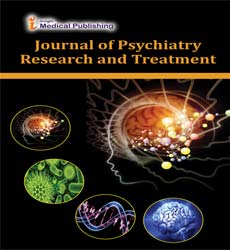An Overview on Achromatopsia
Antony B. Morland*
Department of Psychology, University of York, Heslington, United Kingdom
- *Corresponding Author:
- Antony B. Morland Department of Psychology, University of York, Heslington, United Kingdom, Email: antony.morland@york.ac.uk
Received : December 01, 2021; Accepted : December 15, 2021; Published : December 22, 2021
Citation: Antony B. M (2021) An overview on Achromatopsia. J Psychiatry Res Treat Vol.3 No.1.2.
Finding abulia can be very difficult for the reasons that it falls between two different problems of reduced respiration, and without taking long one can see the annoying occurrence of abulia as akilia mutism or a small example of abulia as negligence and later, no. treat the patient appropriately. If in some way an error has been identified and disassociated, it may prompt attempts to involve the patient in real recovery or alternative negotiations where a source of strong motivation may be necessary to succeed but still be. The best way to diagnose abulia is to see the patient in a clinical way and to deal with direct relationships with friends and family so that the specialist can give the specialist a reference book on how to compare new patient behavior and test. Over the years. In reducing the brain lesions that have been identified as one of the main drivers of abulia.
Pathophysiology: The hemeralopic component of chromatopsia can be painless analyzed using electroretinography. Response to low (scotopic) and intermediate (mesotopic) light intensity will be normal but reactions under high light conditions (image) will not occur. Mesotopic level is twice as low as the clinical level used for an important level of electroretinogram. CGMP; is very important for visual acuity as its level controls the activation of cyclic nucleotide-gated (CNGs) channels. For the release of glutamate. Ner retinal CNGs are produced in 2 α-and 2 β subunits, namely CNGA3 and CNGB3, respectively, in cone cells. When communicated with it alone, CNGB3 cannot create useful channels, although this is not true of CNGA3.The assembly of CNGA3 and CNGB3 produces channels with adjusted layer definition, particle openness (Na + vs K + and Ca2 +), related functionality of cAMP / cGMP implementation, reduced external modification, current brightness, and downside to prevent Lcis- diltiazem. The changes will usually result in a lack of CNGB3 capacity or a gain that is usually extended by cGMP-CNGA3 bias. CGMP levels are inhibited by the action of cone cell transducin, GNAT2. Changes in GNAT2 will often be the result of shortening and, possibly, of non-essential proteins, in these lines that inhibit the conversion of cGMP levels into photons. There is a positive correlation between the sensitivity of mutations in these proteins and the fulfillment of the achromatopsia phenotype. The atomic genetic testing methods used in achromatopsia may include standardized tests of CNGB3 c.1148delC (p.Thr383IlefsTer13) genealogy, multi-generational board use, or complete genetic testing. Old enough for their photophobic movement or their nystagmus. Nystagmus turns out to be uncommon with age but the various side effects of the disorder become as important as the early stages. Visual acuity and visual acuity for the most part improve during the first six to seven years of life - however stay about 20/200. Internal types of condition are considered to be fixed and do not deteriorate with age.
Signs and manifestations: The five symptoms associated with chromatopsia or dychromatopsia are:
• Achromatopsia
• Amblyopia - reduced visual acuity
• Hemeralopia - with a topic that reflects photophobia
• Nystagmus
• The iris is confusing
Open Access Journals
- Aquaculture & Veterinary Science
- Chemistry & Chemical Sciences
- Clinical Sciences
- Engineering
- General Science
- Genetics & Molecular Biology
- Health Care & Nursing
- Immunology & Microbiology
- Materials Science
- Mathematics & Physics
- Medical Sciences
- Neurology & Psychiatry
- Oncology & Cancer Science
- Pharmaceutical Sciences
